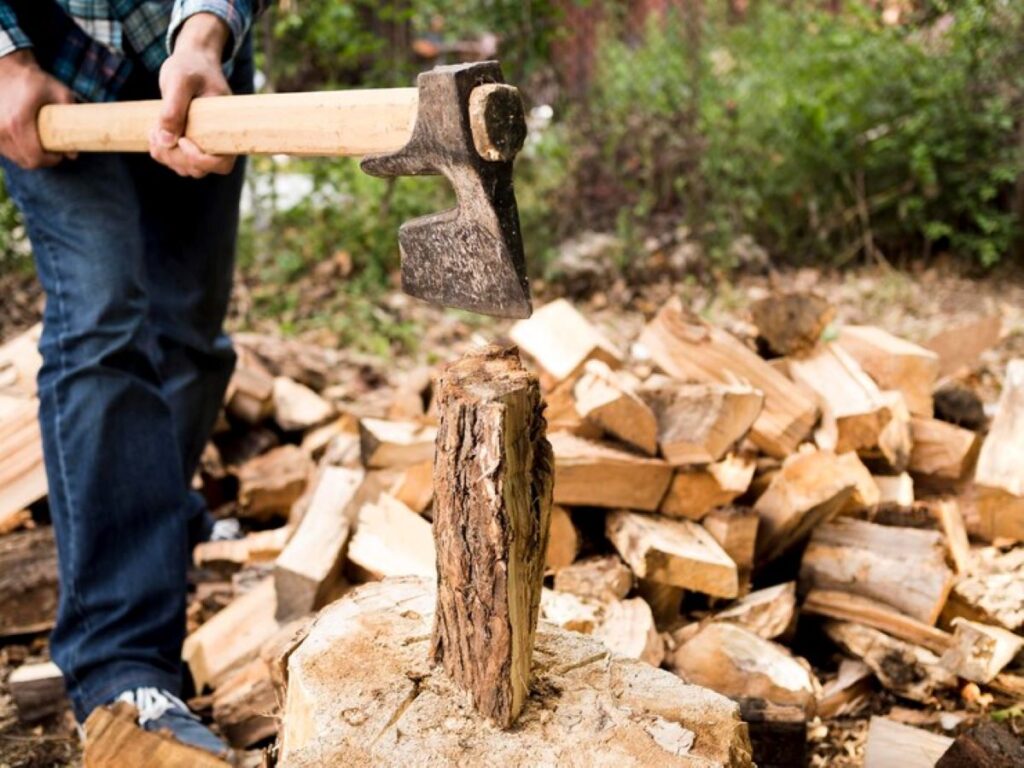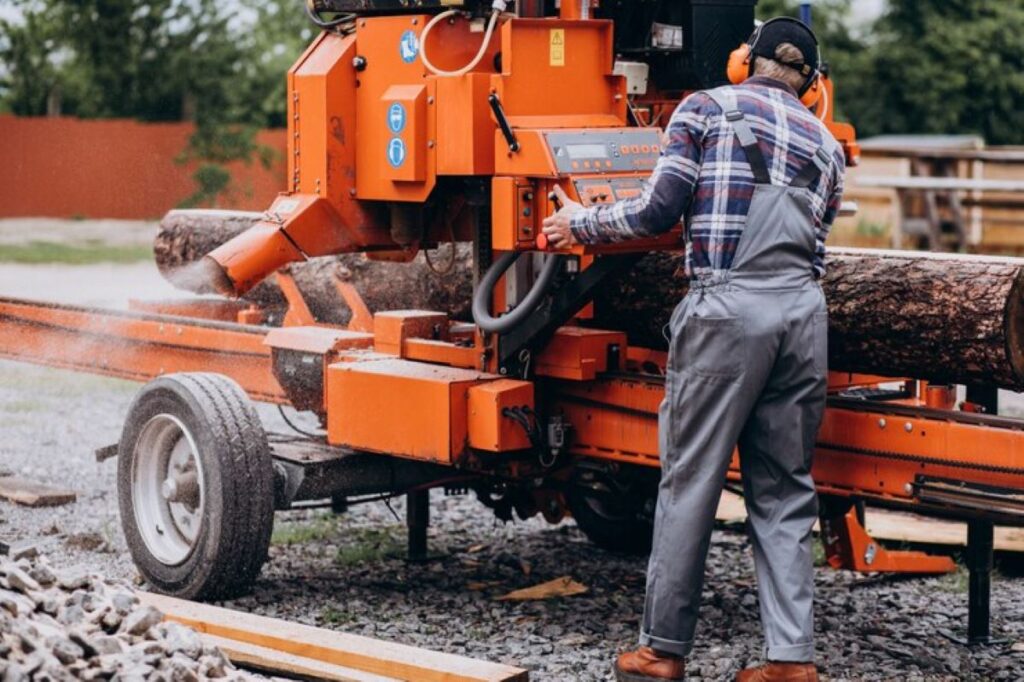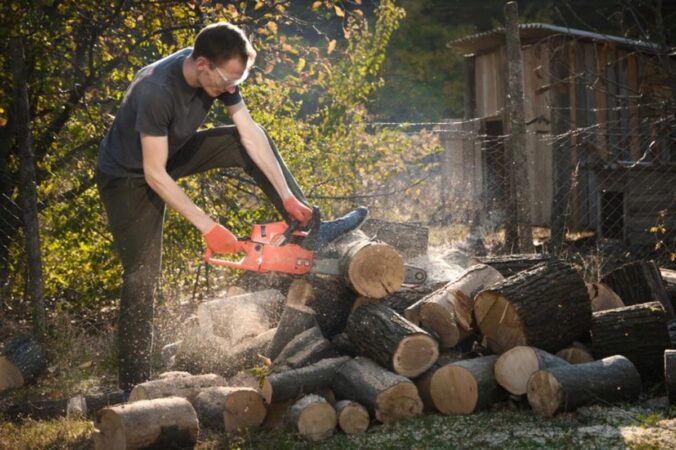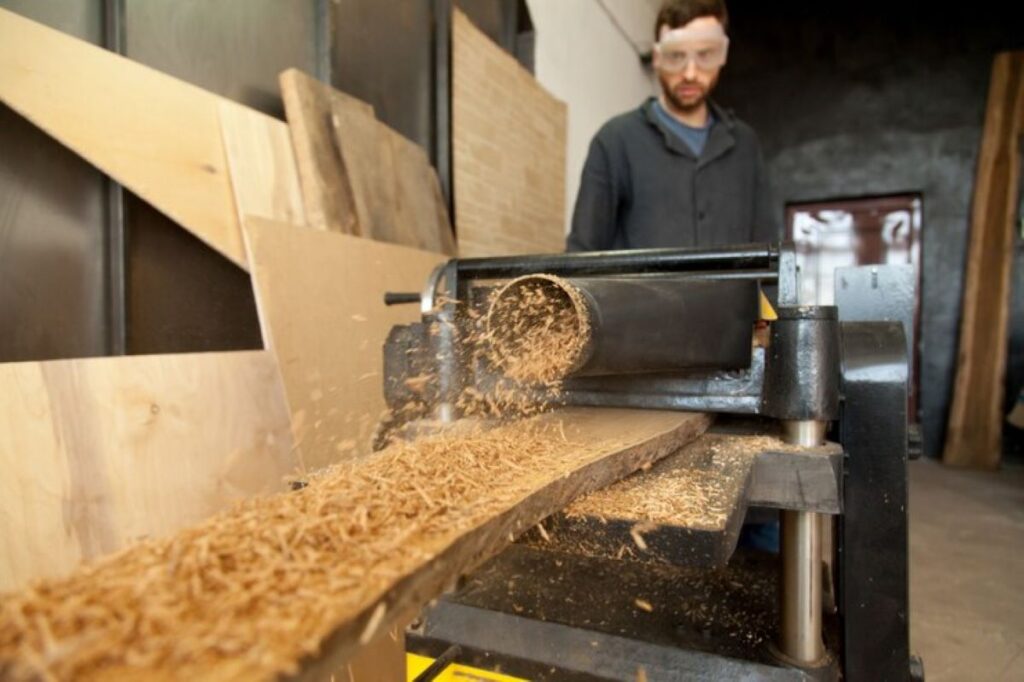Stump grinding is an essential part of property maintenance for homeowners and businesses alike. When it comes to removing tree stumps, it’s important to understand the costs involved. By having a clear understanding of stump grinding prices, you can make informed decisions and budget accordingly.
The Basics of Stump Grinding
Stump grinding is a method used to remove tree stumps by grinding them down into small wood chips. This process is performed using specialized machinery that grinds the stump until it is below ground level. The remaining wood chips can then be used as mulch or removed entirely.
Stump grinding is a crucial step in the tree removal process, ensuring that the entire tree, including its roots, is fully eliminated from your property. By grinding the stump below ground level, you not only get rid of the visible eyesore but also prevent any potential regrowth of the tree. This method is highly effective in reclaiming the space previously occupied by the tree, allowing for new landscaping opportunities.
What is Stump Grinding?
Stump grinding is the process of removing tree stumps using a powerful grinding machine. The grinder consists of a rotating disc with sharp cutting teeth that slowly chip away at the stump until it is ground down to a level below the surface of the soil. This method is efficient and minimizes any damage to the surrounding area.
During the stump grinding process, the machine grinds the wood into small wood chips that can be repurposed as nutrient-rich mulch for your garden or landscaping. This sustainable practice not only helps in the removal of the stump but also provides a natural and eco-friendly way to enhance the health of your soil and plants. The mulch created from stump grinding can improve moisture retention in the soil, suppress weed growth, and gradually decompose to enrich the earth.
Why is Stump Grinding Necessary?
There are several reasons why stump grinding is necessary. Firstly, tree stumps can be an eyesore and detract from the overall appearance of your property. Removing them can greatly improve the aesthetics of your outdoor space. Additionally, stumps can pose safety hazards, especially if they are located in high-traffic areas or near structures. Removing stumps also prevents the growth of new tree sprouts from the remaining root system.
Furthermore, decaying tree stumps can attract pests like termites, ants, and beetles, which can eventually spread to other healthy plants in your garden. By grinding the stump and removing it completely, you eliminate the risk of pest infestations and protect the health of your surrounding vegetation. Stump grinding is not just about aesthetics; it is also a proactive measure to safeguard the beauty and vitality of your outdoor environment.
Factors Influencing Stump Grinding Prices
The cost of stump grinding can vary depending on several factors. Understanding these factors can give you a better idea of what to expect when it comes to pricing.
Stump grinding is a meticulous process that requires specialized equipment and expertise. The professionals who undertake this task meticulously assess various elements before providing a quote. Factors such as the size, location, and number of stumps all play a crucial role in determining the final cost.
Size of the Stump
The size of the stump is one of the primary factors that influence the cost of grinding. Larger stumps require more time and effort to grind down, resulting in higher prices. Stumps with extensive root systems may also be more challenging to remove, affecting the overall cost.
Moreover, the type of tree that the stump belongs to can impact the grinding process. Hardwood trees, such as oak or maple, tend to have denser wood, which can make grinding more labor-intensive and time-consuming. This additional effort may be reflected in the pricing.
Location of the Stump
The location of the stump is another significant factor. Stumps that are easily accessible and located in open areas are generally easier and quicker to grind, resulting in lower costs. However, stumps located in tight spaces or close to structures may require extra care and effort, which can increase the price.
Furthermore, the proximity of the stump to utility lines or underground pipes can also affect the pricing. Special precautions and expertise are necessary to avoid any damage to these essential systems during the grinding process, potentially adding to the overall cost.
Number of Stumps
If you have multiple stumps that need to be ground, some companies offer discounted rates for bulk grinding. The more stumps you have, the lower the cost per stump may be. It’s worth considering this factor if you have several stumps that require removal.
Additionally, the arrangement of the stumps can influence the pricing. Clusters of stumps close together may require specialized techniques or equipment for efficient removal, which could impact the overall cost. Discussing all these factors with the stump grinding service provider can help you get a comprehensive understanding of the pricing structure.

Average Cost of Stump Grinding Services
When it comes to pricing stump grinding services, there are two common methods used: cost per diameter and hourly rates.
Stump grinding is a crucial service for homeowners looking to remove unsightly tree stumps from their properties. Not only does it improve the aesthetics of the landscape, but it also eliminates potential hazards and creates space for new plantings or construction projects.
Cost per Diameter
Some companies charge based on the diameter of the stump. The average cost per diameter ranges from $2 to $4 per inch. For example, a 12-inch diameter stump would cost between $24 and $48 to grind. However, it’s important to note that additional factors can influence the final cost.
The hardness of the wood, the presence of rocks or other obstacles near the stump, and accessibility issues can all impact the overall cost of stump grinding. Additionally, some companies may offer discounts for multiple stumps or include debris removal in their pricing.
Hourly Rates
Other companies may charge an hourly rate for stump grinding. Hourly rates typically range from $150 to $350 per hour, depending on the size of the grinder and the complexity of the job. This pricing method is typically used for larger projects or when multiple stumps need to be ground.
Hourly rates can be advantageous for customers with several stumps of varying sizes, as they provide a more flexible pricing structure. However, it’s essential to inquire about the equipment being used and the experience of the operators to ensure the job is completed efficiently and effectively.
Additional Costs in Stump Grinding
In addition to the base stump grinding prices, there may be additional costs associated with the removal process.
When considering stump grinding, it’s crucial to factor in the potential additional costs that may arise during the removal process. Understanding these extra expenses can help you budget effectively and avoid any surprises along the way.
Root Removal Costs
In some cases, you may choose to have the tree roots removed along with the stump. The cost of root removal will depend on the size and complexity of the root system. This additional service can add to the overall cost of stump grinding.
Removing tree roots can be a labor-intensive process, especially if the roots are extensive or deeply embedded in the soil. The equipment and manpower required for root removal contribute to the additional costs associated with this service. However, eliminating the roots can prevent potential issues in the future, such as regrowth or interference with underground utilities. Click here to get about how to grind tree stumps safely and effectively.
Stump Disposal Fees
If you opt to have the wood chips and debris removed from your property, there may be additional disposal fees. Some companies include the removal and disposal in their pricing, while others may charge extra. It’s essential to clarify this with the service provider upfront.
Disposing of stump debris responsibly is not only a matter of aesthetics but also of environmental concern. Proper disposal methods ensure that the wood chips and remnants do not contribute to landfills or pose hazards to the surrounding ecosystem. Understanding the disposal process and associated fees can help you make an informed decision about how to manage the aftermath of stump grinding on your property.
Hiring a Professional vs DIY Stump Grinding
When it comes to stump grinding, you may be tempted to tackle the task yourself. However, it’s crucial to weigh the pros and cons before deciding whether to hire a professional or undertake the job on your own.
Stump grinding is not just a simple task of removing a stump from your property. It requires precision, skill, and the right equipment to ensure a safe and efficient removal. This is where hiring a professional stump grinding service can make all the difference.
Pros and Cons of Hiring a Professional
One of the main advantages of hiring a professional stump grinding service is their expertise and experience. These professionals have spent years perfecting their craft, honing their skills, and staying up-to-date with the latest techniques and equipment. They know how to handle different types of stumps, whether they are small or large, and can assess the best approach for each specific situation.
Not only do professionals have the necessary knowledge, but they also come equipped with specialized tools and machinery designed specifically for stump grinding. This means they can efficiently and safely remove stumps without causing any damage to your property. They can also handle any additional services you may require, such as root removal or disposal, saving you time and effort.
However, it’s important to consider the cost when hiring a professional. Professional stump grinding services can be more expensive compared to DIY options. The price may vary depending on the size and complexity of the job, as well as the location of the stumps. But when you take into account the convenience, expertise, and potential for additional services, it may be worth the investment, especially for larger stumps or multiple stumps.

Pros and Cons of DIY Stump Grinding
DIY stump grinding can be a cost-effective option if you have the necessary tools and experience. Small stumps and those in easily accessible areas may be suitable for a DIY approach. It can give you a sense of accomplishment and save you some money in the process.
However, it’s essential to note that stump grinding can be physically demanding and potentially dangerous if not done correctly. Without the proper knowledge and experience, you may risk injury to yourself or damage to your property. It’s crucial to educate yourself on proper stump grinding techniques, wear protective gear, and take necessary safety precautions.
Another factor to consider when opting for the DIY route is the cost of renting stump grinding equipment. While it may seem like a cheaper alternative at first, the rental fees can quickly add up, especially if the job takes longer than expected or if you encounter any difficulties along the way.
Ultimately, the choice between hiring a professional or DIY stump grinding depends on the size and complexity of the job, your level of experience, and your budget. It’s important to carefully evaluate these factors and make an informed decision that ensures the best outcome for your specific situation.
Conclusion
Understanding stump grinding prices is essential when it comes to removing tree stumps from your property. By considering factors such as the size and location of the stump, as well as additional costs for root removal and disposal, you can plan and budget accordingly.
Deciding whether to hire a professional or take a DIY approach is a personal choice that depends on various factors. Regardless of which option you choose, proper knowledge, safety precautions, and careful consideration are key to achieving successful stump removal results.



